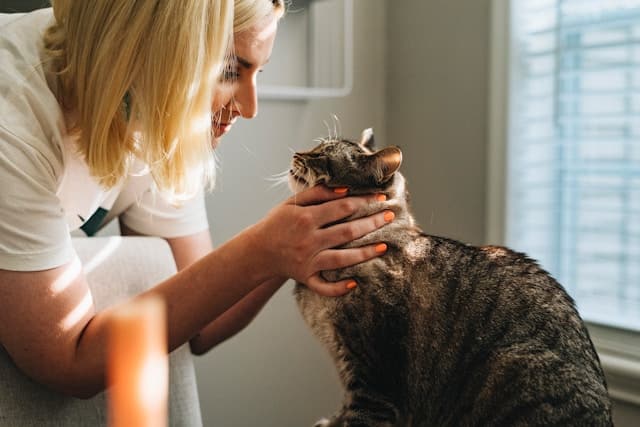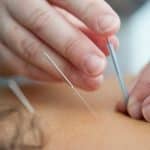When your favorite feline friend needs a surgical procedure, it’s essential to prepare a comfortable, safe recovery area to help them heal. As responsible pet owners, you must understand how to support your cat’s recovery process. In this article, we’ll provide a detailed guide on creating a recovery room for post-surgery cat care.
Understanding Your Cat’s Needs After Surgery
While every surgical procedure is different, it’s crucial to comprehend the general needs of a cat following surgery. Post-operative care involves maintaining the cleanliness of the incision site, managing pain, and ensuring your pet gets adequate rest.
A voir aussi : How to Train a French Bulldog Not to Snore Loudly at Night?
Incision Care
After your cat’s surgery, the vet may provide you with specific instructions on how to care for the incision. Usually, this involves keeping the area clean and dry, and monitoring it daily for signs of infection like swelling, redness, or discharge. Do not let your cat lick or scratch the incision, as this can delay healing.
Pain Management
Just like humans, cats can experience pain following a surgical procedure. Therefore, your veterinarian may prescribe pain medication to be administered at home. Make sure to follow the prescription instructions exactly to ensure your cat receives adequate pain relief.
Cela peut vous intéresser : What Are the Best Non-Toxic Plants for Creating an Indoor Oasis for Pets?
Rest and Relaxation
Rest is critical for recovery. Your cat will probably be very tired after surgery and anesthetic, so a quiet, comfortable space is essential.
Setting Up the Recovery Room
The recovery room is a critical component of your cat’s post-surgery care. It should be a quiet, comfortable, and secure area that encourages rest and healing.
Choosing the Right Room
Select a room that is quiet and free from disturbances. Keep in mind that the room will need to be temperature-controlled to keep your cat comfortable. Ensure there is enough space for your cat to move around a little, but not too much to prevent overexertion.
Preparing the Room
The room should be clean to prevent infection. Remove any small objects your cat might swallow or harmful substances they may come into contact with. A comfortable bed and blankets that smell like home will help your cat feel safe and relaxed.
Monitoring Your Cat
Regular monitoring is an integral part of post-surgery care. Keep an eye out for any changes in your cat’s behavior, eating habits, or bathroom routines. If you notice anything unusual, contact your vet immediately.
Feeding Your Cat After Surgery
Diet plays an essential role in your cat’s recovery. Your vet will likely provide advice on what and when to feed your cat after the surgical procedure.
Special Dietary Needs
Depending on your cat’s surgery, they may need a special diet. For instance, if your cat has had dental surgery, they might need soft foods that are easy to eat.
Hydration
Hydration is critical for recovery. Always have fresh water available for your cat in their recovery room and encourage them to drink regularly.
Keeping Your Cat Comfortable
No one likes to be in pain, including cats. Therefore, ensuring their comfort during recovery is paramount to their overall healing process.
Providing Comfort
A warm, soft bed is perfect for a cat’s recovery. You may want to include one of your worn t-shirts, which carries your scent to comfort your furry friend in your absence.
Entertainment
While rest is crucial, a bit of entertainment will help prevent boredom. Simple toys can keep your cat stimulated without causing exertion.
Gentle Affection
While you should avoid handling your cat too much after surgery, gentle petting and soothing words can offer comfort and reassurance.
The process of creating a recovery room for post-surgery cat care is an act of love and commitment to your pet. As they recover, remember to maintain patience and understanding. Their healing time is an opportunity for you to provide extra love and care. With the right approach, your cat will be back to their old self in no time.
Using Positive Reinforcement to Aid Your Cat’s Recovery
Positive reinforcement can play an instrumental role in helping your cat recover after surgery. While it may seem simple, positive reinforcement, if used correctly, can significantly contribute to your cat’s healing process.
Praise and Rewards
Positive reinforcement is all about rewarding good behavior. After a surgery, when your cat begins to show signs of recovery, like eating well, using the litter box, or moving a bit more, it’s essential to recognize and reward this behavior. Kind words, gentle strokes, and a few treats can go a long way in encouraging your cat to recover faster.
Consistency in Positive Reinforcement
Maintaining consistency is essential when using positive reinforcement. Ensure that you consistently reward your cat whenever they show signs of improvement. This consistency will help your cat understand the connection between their positive behavior and the rewards, which will further motivate them to recover.
Use of Toys
Toys can serve as excellent rewards. Opt for simple toys that will stimulate your cat without exerting them. Remember, the goal is not to wear out your cat but to use toys as a form of positive reinforcement to encourage recovery.
Providing a Stress-Free Environment for Your Cat
Creating a stress-free environment for your cat can significantly speed up the recovery process. Stress can delay healing and even lead to additional health complications. Therefore, it’s essential to make the recovery room as serene and peaceful as possible.
Limiting Noise and Disturbances
Loud noise and constant disruptions can cause stress for your cat. Therefore, ensure the recovery room is quiet and free from disturbances. Shutting the doors and windows to block out external noise can help create a peaceful environment for your cat.
Familiar Scents
Familiar scents can have a calming effect on your cat. Items like your worn t-shirt or their favorite blanket can provide a sense of security and familiarity to your cat. These familiar scents can help keep your cat calm and relaxed during recovery.
Maintaining a Routine
Cats are creatures of routine, and a sudden change in routine can cause stress. Even after surgery, try to maintain your cat’s routine as much as possible. This includes feeding times, grooming, and even the time you spend with them for cuddles or play.
Conclusion
Creating a recovery room for your cat post-surgery and providing the necessary care and attention requires commitment and patience. Remember, each cat’s recovery journey is unique, and it’s crucial to understand and respect your cat’s pace of healing. Be prepared to provide consistent care, keep the environment stress-free, use positive reinforcement effectively, and maintain clear communication with your vet throughout the recovery process.
By following these steps, you can create a conducive environment that aids in your cat’s recovery, reducing their downtime and ensuring they bounce back to their old self sooner than later. After all, seeing your beloved feline friend healthy and happy is worth every effort you put into their post-surgery care.











